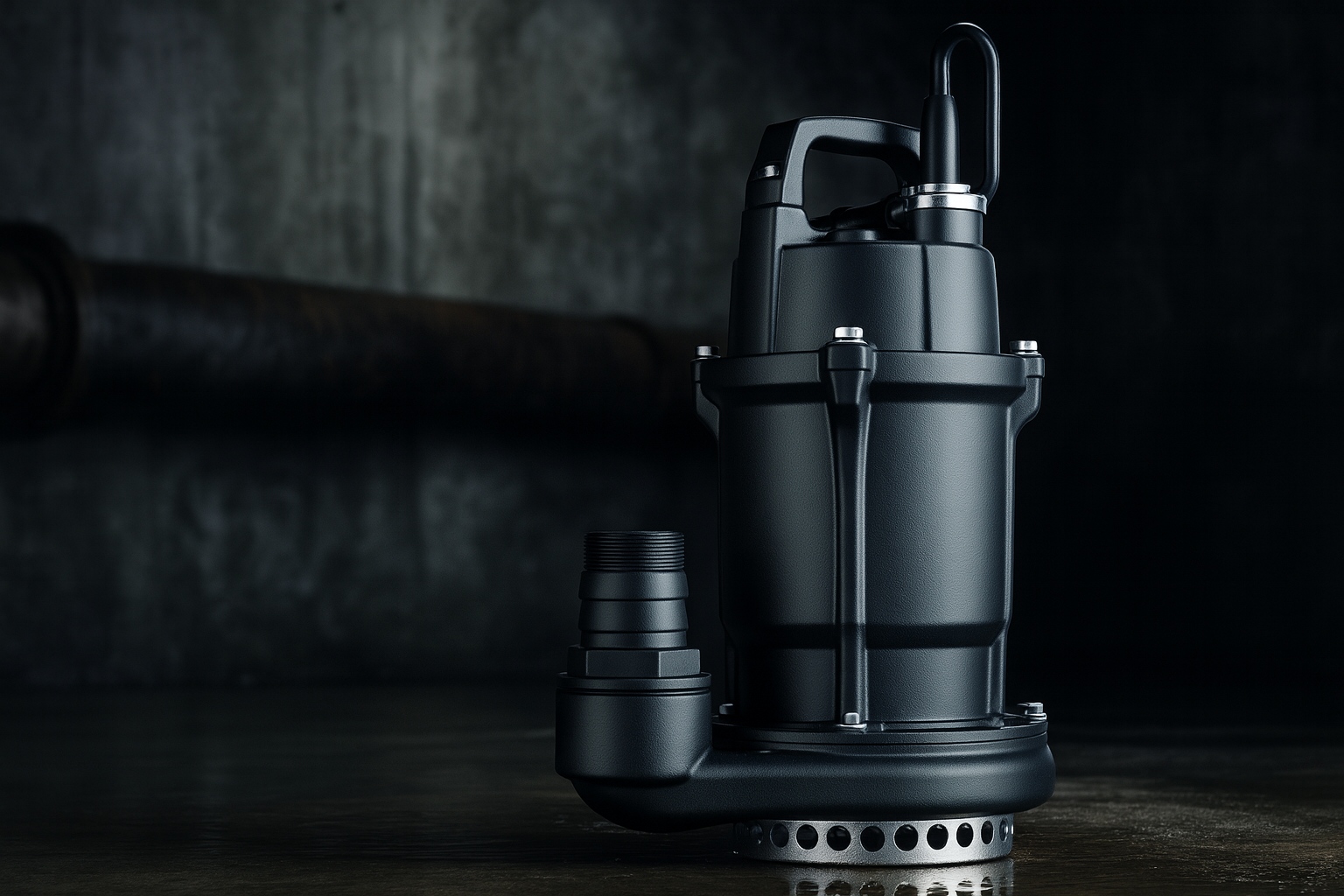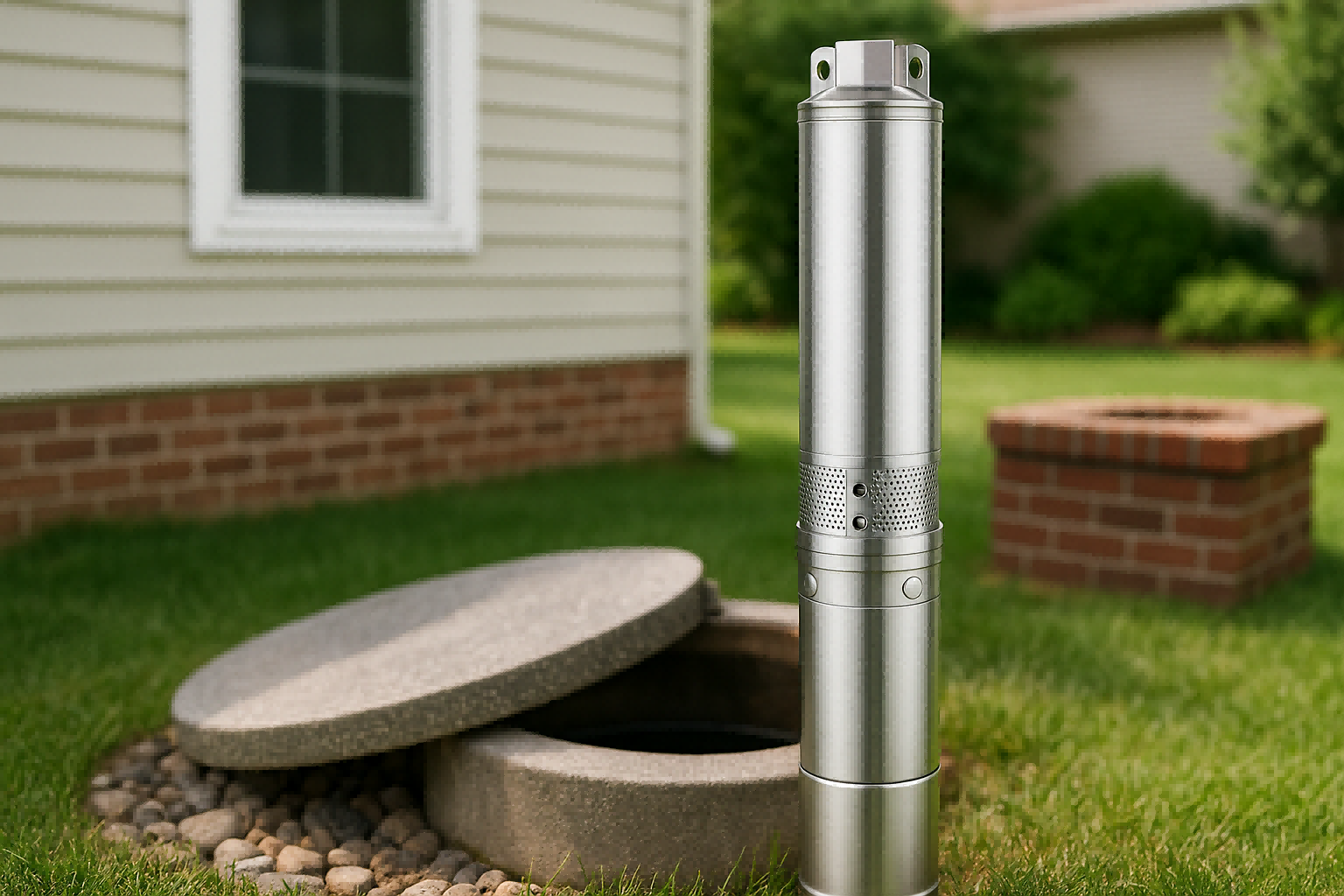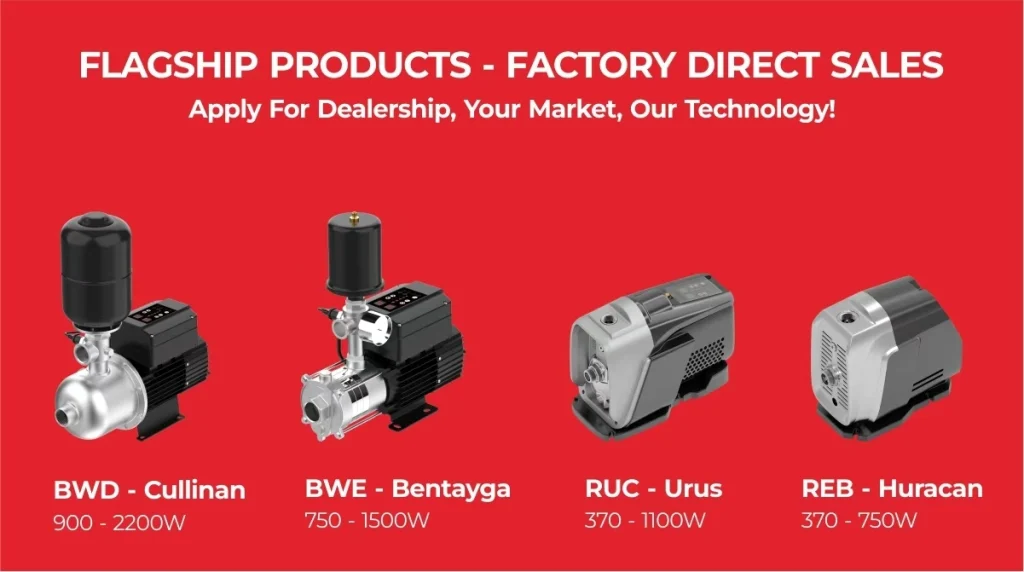Low water pressure is frustrating your customers and hurting your reputation.
You need a solution that works long-term, but choosing the wrong pump means it will fail quickly, causing more problems.
Generally, a well-maintained water booster pump can last 10 to 15 years.
This lifespan varies based on pump quality, usage, water conditions, and maintenance.
High-quality pumps with smart features often last longer and perform more reliably.

The lifespan of a booster pump is not just a number.
It's a direct result of its design, the materials used, and how it is operated.
Simply saying "10 to 15 years" doesn't tell the whole story.
Understanding the specific factors that extend or shorten this lifespan is crucial for making a wise investment.
It helps you promise reliability to your own customers.
Let's explore what truly defines a long-lasting booster pump so you can choose a product that delivers consistent value for years to come.
Key Factors Affecting Lifespan
You know that pump quality matters, but it's hard to tell what makes one pump superior to another.
Simply choosing a known brand isn't enough, as even good brands have different quality levels.
The most critical factors are the pump's build quality, installation correctness, usage intensity, water quality, and maintenance routine.
These elements work together to determine a pump's true operational life.
A cheap pump used heavily in harsh conditions may fail in a year, while a premium pump with light use might last over two decades.
To truly grasp pump longevity, we must look beyond the surface.
The difference between a pump that fails prematurely and one that lasts for decades is in the engineering details.
These details cover everything from the motor's core technology to the materials of the smallest seal.
A deeper dive into these factors reveals how modern technology is pushing the boundaries of pump lifespan far beyond traditional expectations.
Pump Quality: The Foundation of Durability
The term 'quality' is more than just a label.
For a booster pump, it refers to specific choices in engineering and materials.
High-grade internal components are the number one predictor of a long service life.
A pump's core drive technology is a great example.
- Motor Technology: Modern pumps use advanced motors like Permanent Magnet Synchronous Motors (PMSM). These run cooler and more efficiently than older designs. A cooler motor directly leads to a longer life for its internal windings and components. They also deliver higher speeds and power in a smaller package.
- Drive System: A Variable Frequency Drive (VFD) works with the motor to provide a soft start and soft stop. This function is critical for mechanical health. It eliminates the sudden mechanical shock and electrical surge of a traditional pump, reducing wear on bearings, seals, and the motor itself. This gentle operation prevents water hammer in the pipes.
- Material Selection: The parts that touch water are especially important. Impellers and pump housings made from AISI 304 stainless steel or high-quality brass resist corrosion and wear from sediment. This prevents performance degradation and eventual failure. The pump's outer casing should also be made from durable, UV-resistant materials to prevent cracking and damage from sun exposure.
Installation & Usage: The Operating Environment
Even the best pump will fail if installed or used improperly.
Correct installation ensures the pump operates within its designed parameters.
Vibrations from poor mounting can destroy bearings over time.
Incorrect pipe sizing can cause cavitation or strain the motor.
Usage patterns are equally important.
A pump that runs continuously under high load will wear out much faster than one used intermittently.
This is where intelligent controls make a huge difference.
A VFD-controlled pump only runs as fast as needed to meet demand, which drastically reduces overall operating hours and wear.
| Factor | Bad Practice (Shortens Life) | Best Practice (Extends Life) |
|---|---|---|
| Mounting | Uneven surface, no vibration dampening | Solid, level base with anti-vibration pads |
| Piping | Undersized pipes, sharp 90-degree bends | Correctly sized pipes, gradual bends to reduce friction |
| Usage | Constant on/off cycling, running at 100% speed | VFD control matches speed to demand, soft starts |
| Pressure Tank | No tank or undersized tank | A correctly sized pressure tank (e.g., 1.5L-5L) can reduce pump starts by up to 70%. |
Water Quality & Maintenance: The Hidden Destroyers
Water is not always pure.
Sediment, minerals, and chemicals in the water act like sandpaper on internal pump components.
High mineral content can lead to scale buildup, which reduces efficiency and causes overheating.
Regular maintenance is your defense against these issues.
However, modern pumps are making maintenance easier and more automated.
Intelligent pumps have built-in protection systems that actively monitor for problems.
They can detect issues like dry-running (water shortage), overheating, voltage fluctuations, and even potential pipeline leaks.
These systems can automatically shut the pump down or enter a recovery mode to prevent catastrophic damage.
This proactive self-protection is a key feature of a truly durable, twenty-first-century pump, acting as a 24/7 maintenance check.
Tips for Prolonging Pump Lifespan
You want to offer your clients products that last, but they don't have time for complex maintenance schedules.
Traditional advice about lubrication and filter cleaning is useful, but it relies on human intervention.
The best way to prolong pump life is to choose a pump with advanced, built-in protective technologies.
Modern VFD pumps extend their own lifespan by intelligently managing their operation and protecting themselves from common failure modes, drastically reducing the need for manual checks and interventions.
Let's move beyond basic tips and look at the specific design features that deliver a longer operational life with minimal user effort.
The true innovation in extending pump lifespan isn't in better maintenance schedules.
It's in building a pump that is smart enough to protect itself from damage.
From the electronics to the mechanical parts, every component can be engineered for superior durability.
By focusing on these engineered features, you provide a product that is inherently more reliable.
Invest in Superior Electronic Protection
The "brain" of a modern pump is its electronic controller or printed circuit board (PCB).
This is often the first component to fail due to moisture, dust, or vibration in a damp utility room.
Look for pumps with fully sealed, potted electronics to guarantee reliability.
This manufacturing process involves encasing the entire PCB in a solid, waterproof resin.
This creates an unbreachable shield for the delicate components inside.
- IP67 Waterproofing: This process creates an impenetrable barrier against moisture, humidity, and condensation, which are common in pump environments. A fully sealed board can prevent over 95% of moisture-related electronic failures. It makes the core electronics completely waterproof, not just water-resistant.
- Vibration Dampening: The solid resin holds every electronic component securely in place. This makes the board highly resistant to damage from the micro-vibrations generated during pump operation.
- Extended Lifespan: By completely isolating the sensitive electronics from the harsh operating environment, this potting feature can extend the controller's life by an estimated 3 to 5 years or more compared to a standard, unsealed board. This is one of the most significant single upgrades for pump longevity.
Choose Pumps with Comprehensive Self-Protection
A smart pump is a long-lasting pump.
An advanced pump should have a multi-layered electronic protection system that acts as a constant guard.
This system actively monitors dozens of parameters to prevent conditions that would destroy a lesser pump.
It is the difference between a pump that fails and a pump that waits for conditions to improve.
Key protective functions include:
| Protection Type | Function | Benefit for Longevity |
|---|---|---|
| Dry Run Protection | Senses lack of water and initiates intelligent shutdown/restart cycles. | Prevents motor burnout and mechanical seal damage from running without water. |
| Over/Under Voltage | Monitors incoming power and shuts down if voltage is unsafe. | Protects all electronic components from damage due to unstable power grids. |
| Component Overheating | Temperature sensors on the motor and PCB prevent overheating. | Extends the life of the motor windings and the electronic driver board. |
| Antifreeze Protection | Automatically runs the pump for a few seconds in freezing conditions. | Prevents ice formation from cracking the pump housing or volute. |
| Stall Protection | Detects if the motor is stalled by debris and stops it to prevent burnout. | Prevents catastrophic motor failure when the impeller is blocked. |
Prioritize Excellent Mechanical and Thermal Design
The physical build of the pump is just as important as the electronics.
Superior thermal management is essential for motor longevity because heat is the enemy of all electronics and mechanical parts.
A motor that runs cool will last significantly longer.
Look for specific features designed to dissipate heat and reduce wear.
- High-Efficiency Cooling: Look for pumps with enhanced cooling systems. Designs with optimized fan blades and airflow channels can improve airflow by 15% or more and boost heat dissipation efficiency significantly, keeping the motor and electronics well within safe operating temperatures.
- Advanced Stator Design: High-end motors use superior materials. This includes high-grade silicon steel to reduce energy loss as heat and Class F insulation wire in the motor's stator. This combination results in a low temperature rise and allows the motor to withstand higher temperatures safely without degradation.
- Premium Bearings: The use of high-precision, low-noise bearings from top-tier manufacturers isn't just about quiet operation. They create less friction, which means less heat and wear. These bearings can offer a measurably longer lifespan compared to standard, generic bearings, preventing a common point of noisy mechanical failure.
By choosing a pump with these built-in durability features, you are providing a solution engineered from the ground up for a long and reliable service life.
Signs Your Pump Might Need Replacement
A failing pump can cause sudden and serious disruptions for your customers.
Waiting for a complete breakdown is a reactive and costly strategy that can damage your business's reputation.
Frequent repairs and a noticeable drop in water pressure are clear signs that a pump is nearing the end of its life.
Ignoring these warnings almost always leads to higher long-term costs and an eventual emergency replacement.
Recognizing the early signs of failure allows for a planned, proactive replacement, which saves money and protects your customer relationship.
Understanding the warning signs is the first step.
The next is understanding why they happen and how a modern pump's design can alert you to these issues before they become critical.
A pump that can self-diagnose and communicate its status is an invaluable tool for preventative maintenance and timely replacement.
Let's examine the common symptoms of failure and how an intelligent pump provides clear, actionable data that a basic pump cannot.
Reduced Performance
This is often the first and most obvious sign of a pump's decline.
If the pump struggles to maintain the pressure it once did, its internal components are likely worn out.
This performance drop is typically caused by a worn impeller or diffuser.
As these critical parts erode from sediment, debris, or cavitation, the pump can no longer move water efficiently.
It has to work harder and run longer to try and meet the pressure setting.
This not only increases energy consumption but also accelerates further wear on the already tired components.
- Modern Solution: An intelligent VFD pump's control panel can display real-time operational data. This feature turns guesswork into diagnosis. You can cycle through a display to see critical parameters like motor speed (RPM) and power consumption (watts). If you notice the pump is consistently running at a higher speed or drawing more power than it used to just to maintain the same pressure, it's a clear, data-driven indicator of internal wear and growing inefficiency. This allows you to plan for a replacement before it fails completely.
Frequent Repairs and Unusual Noises
A reliable pump should not need constant attention or repair calls.
If you find yourself repeatedly fixing the same issues, the cumulative cost of repairs will soon outweigh the cost of a new pump.
Strange noises are an urgent warning of mechanical problems.
You should never ignore sounds like grinding, rattling, or high-pitched whining.
| Sound | Likely Cause | Consequence if Ignored |
|---|---|---|
| Grinding/Rumbling | Failed bearings in the motor. | Catastrophic motor seizure, which can damage the shaft and render the pump unrepairable. |
| Rattling | Debris in the pump housing or a loose impeller. | Severe damage to the impeller and the pump housing (volute), leading to a total loss of pressure. |
| High-Pitched Whine | Clogged pipes or filter causing pump strain (cavitation). | Motor overheating, mechanical seal failure, and eventual burnout. |
An advanced pump often includes diagnostic error codes.
Instead of just making a noise, it might display a specific warning on its screen, such as "Stall Protection" or "Overcurrent."
These codes can point a technician directly to the developing problem, making troubleshooting faster and more accurate.
System Warnings and Leaks
Physical signs of distress are often the final warnings before total failure.
Visible water leaks, especially from the motor shaft seals, or excessive vibration indicate that critical components have already failed.
A pump is designed to be a perfectly sealed system.
Any leak, no matter how small, is a sign of a compromised seal or a cracked housing.
Excessive vibration means the rotating assembly is out of balance.
This is likely due to worn bearings or a damaged impeller.
Continuing to run a pump in this condition will quickly lead to its total destruction.
Modern pumps with built-in leak detection warnings can provide a valuable early alert.
They monitor pressure drops that aren't related to normal water usage, suggesting a leak somewhere in the system.
This allows for intervention before a small drip becomes a major flood and causes significant property damage.
Conclusion
Understanding a booster pump's lifespan goes beyond a simple 10-15 year estimate.
True longevity is achieved through superior engineering, intelligent self-protection, and robust materials that define modern, high-quality pumps.
FAQs
How do I know if my booster pump is dying?
Look for lower water pressure, strange noises like grinding or whining, and frequent leaks.
A sudden increase in your electricity bill can also be a sign of a failing pump.
How can I make my water pump last longer?
Ensure proper installation on a solid base, clean filters regularly, and choose a pump with built-in protections like soft start and dry-run prevention to minimize wear and tear.
Does a booster pump use a lot of electricity?
Traditional pumps can be energy-intensive.
However, modern Variable Frequency Drive (VFD) pumps are highly efficient, often cutting electricity consumption by up to 50% by adjusting motor speed to match demand.
What happens when a booster pump fails?
A failed booster pump will result in a sudden and complete loss of water pressure.
In some cases, it can also lead to leaks, water damage, or electrical issues.
Is it worth repairing a 10-year-old booster pump?
It depends on the issue.
For a minor, inexpensive repair, it might be worthwhile.
However, if the repair is costly, replacing it with a new, more efficient model is often the better long-term investment.
Can a booster pump run continuously?
While some pumps are rated for continuous duty, it significantly increases wear.
A VFD-controlled pump is better, as it rests or runs at low speeds when demand is low, greatly extending its life.
What is the most common cause of booster pump failure?
Running without water (dry running) is a very common and destructive cause of failure.
It can quickly destroy the pump's seals and cause the motor to overheat and burn out.








